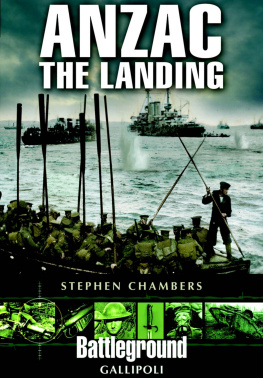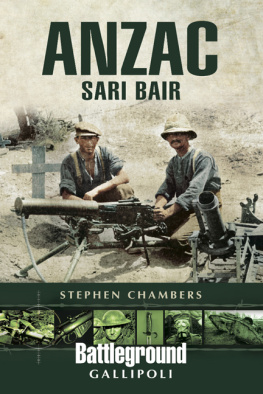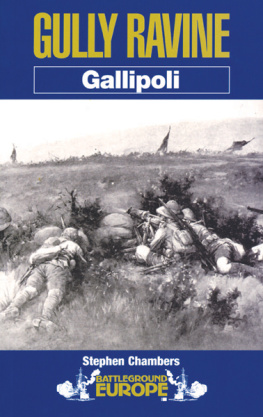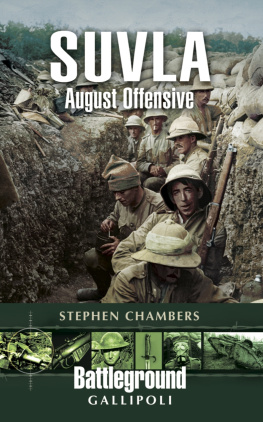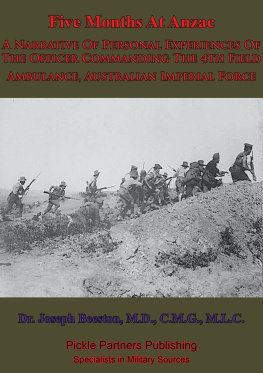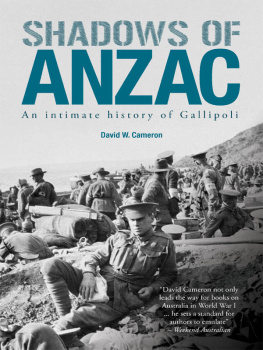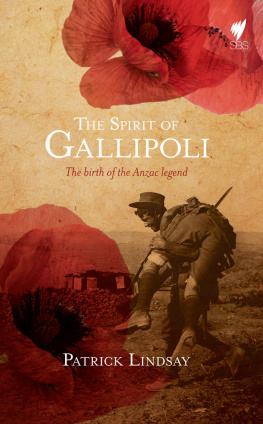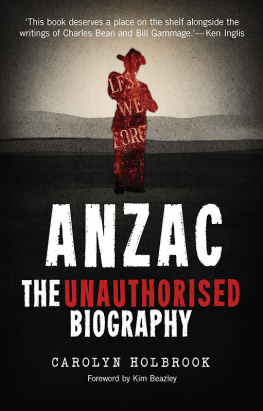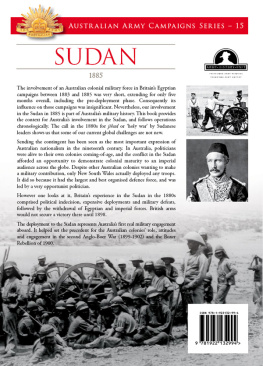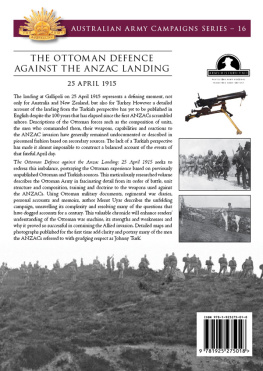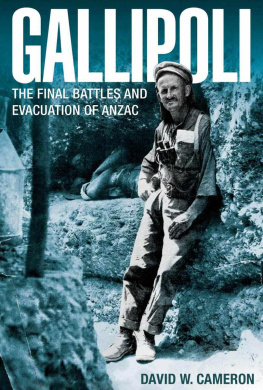Order of Battle Anzac 25-27 April 1915
Mediterranean Expeditionary Force
Commander in Chief: General Sir Ian Hamilton
Note: The MEF comprised five Divisions, the other three were involved in landing operations at Cape Helles, Kum Kale and the Gulf of Saros.
Australian & New Zealand Army Corps
G.O.C. Lieutenant General Sir W.R. Birdwood KCSI, BGGS
1st Australian Division
Major General W.T. Bridges CMG
1 Brigade (New South Wales) Colonel H.N. MacLaurin BM
1/AIF (New South Wales) Lt Col. L. Dobbin
2/AIF (New South Wales) Lt Col. G.F. Braund VD
3/AIF (New South Wales) Lt Col. R.H. Owen
4/AIF (New South Wales) Lt Col. A.J.O. Thompson
2 Brigade (Victoria) Colonel J.W. McCay VD, BM
5/AIF (Victoria) Lt Col. D.S. Wanliss
6/AIF (Victoria) Lt Col. W.R. McNicoll
7/AIF (Victoria) Lt Col. H.E. Pompey Elliott DCM
8/AIF (Victoria) Lt Col. W. Bolton VD
3 Brigade (Covering Force) Colonel E. Sinclair-MacLagan DSO, BM
9/AIF (Queensland) Lt Col. H.W. Lee VD
10/AIF (South Australia) Lt Col. S.P. Weir VD
11/AIF (Western Australia) Lt Col. J.L. Johnson
12/AIF (SA, WA & Tasmania) Lt Col. L.F. Clarke DSO, VD
Artillery Colonel J.J. T. Hobbs VD
2 Field Artillery Brigade (Victoria) Lt Col. G.J. Johnston
3 Field Artillery Brigade (Queensland) Lt Col. C. Rosenthal Attached: 7 Indian Mountain Artillery Brigade
Note: 1 Field Artillery Brigade (NSW) not landed at Anzac
Engineers (1, 2 & 3 Field Company) Major G.C.E. Elliot
Signal Coy Major H.L. Hackworth DSO
Medical Col. W.D.C. Williams CMG
1 Australian Field Ambulance (NSW) Lt Col. B.J. Newmarch VD
2 Australian Field Ambulance (Victoria) Lt Col. A.H. Sturdee VD
3 Australian Field Ambulances (Outer States) Lt Col. A. Sutton
Australian and New Zealand Division
Major General Sir A. Godley KCMG, CB
Note: For this operation the Division comprised only two Brigades
4 Brigade Colonel J. Monash VD, BM
13/AIF (New South Wales) Lt Col. G.J. Burnage VD
14/AIF (Victoria) Lt Col. R.E. Courtney VD
15/AIF (Queensland & Tasmania) Lt Col. J.H. Cannan
16/AIF (S & W Australian) Lt-Col H. Pope
NZ Brigade Brigadier General H.B. Walker
Auckland Battalion Lt Col. A. Plugge
Canterbury Battalion Lt Col. D.M. Stewart
Otago Battalion Lt Col. A. Moore
Wellington Battalion Lt Col. W.G. Malone
Artillery - Three batteries: (No.1 and No.2 Field Artillery Batteries and the NZ Howitzer Battery)
Engineers (NZ Field Company)
Medical (4 Australian Field Ambulance & NZ Field Ambulance)
Order of Battle Turkish
Fifth Ottoman Army
Commander in Chief: General Otto Liman von Sanders
Note: Comprised two Corps, a Cavalry Brigade and six Divisions. Only the following were active at Anzac during 25-27 April 1915. This breakdown does not include artillery, engineers, medical and other ancillary units.
III Corps
G.O.C. Brigadier General Essad Pasha
9th Division
Colonel Halil Sami Bey
Note: 25th and 26th Regiments were engaged at Cape Helles
27th Regiment Lieutenant Colonel Sefik Aker Bey
1/27 Battalion - Major Cemil Bey
2/27 Battalion - Major Ismet Bey
3/27 Battalion - Major Halis Bey
Attached: Broussa Gendarmerie Field Battalion
19th Division
Lieutenant Colonel Mustafa Kemal Bey
57th Regiment Colonel Hseyin Avni Bey
1/57 Battalion - Major Zeki Bey
2/57 Battalion - Captain Ata Bey
3/57 Battalion - Captain Hairi Bey
72nd Regiment Major Mehmet Munir Bey
77th Regiment Lieutenant Colonel Saib Bey
33rd Regiment Lieutenant Colonel Sevki Bey
64th Regiment Lieutenant Colonel Servet Bey
Note: 33 and 64 Regiments attached for 27 April counter-attack.
Appendix II
Special Instructions
- RIFLES ARE NOT TO BE LOADED, nor are magazines to be charged until troops have landed.
- RESERVE AMMUNITION for M.Guns is to be carried by the 10 pioneers from Bn. Hdqrs. Reserve ammunition for Companies, when landed, is to be carried under Battalion arrangements.
- ENTRENCHING TOOLS are to be carried by reserve Coys. of Bns. as far forward towards second objectives as possible. If discarded they should be left together under a guard of not more than two men. Bde. Reserve Tools are to be carried by a Coy. of the 12th Bn.
- WATER - BOTTLES and water-bags are to be filled overnight.
- NO RIFLE FIRE is to be employed until broad daylight. The bayonet only is to be used.
- The greatest care is to be taken to CONSERVE water and ammunition.
- The strictest maintenance of discipline as for night operations is essential to the success of the whole undertaking.
- The inshore advance towards the main objective is to be conducted as RAPIDLY as possible.
- Owing to thick scrub, it is inadvisable to send single men on messages or detached duties.

